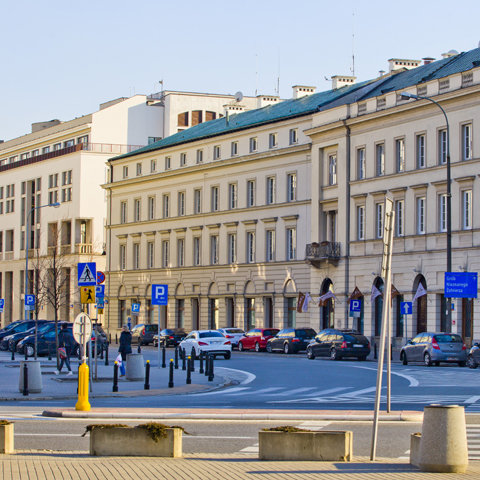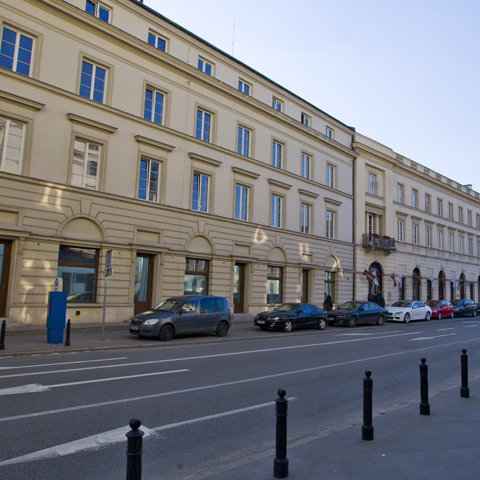Composers / Fryderyk Chopin / Places catalog
Ludwik Dmuszewski’s house
A two-storey townhouse, designed by Hilary Szpilowski, was erected at ul. Wierzbowa 9 in 1818–1819. The owner was the actor, singer, dramatist and translator Adam Dmuszewski, who in 1822 became publisher of the Kurier Warszawski [Warsaw courier], which he had taken over, and possibly even bought for next to nothing, from Count Bruno Kiciński. Dmuszewski soon made it the most widely read newspaper in the city.
The Kurier’s printing office was on the right at the back of the courtyard. The advertising and subscription office was on the left. Juliusz W. Gomulicki wrote in 1959 that the printing office was run until the end of the nineteenth century by Michał, ‘the oldest comrade of the art of printing in Warsaw’. On the first floor, ‘Czerniejewski, the red-nosed typesetter’, reigned supreme in the typesetting room, and the journalists worked in the rooms next to him. ‘As Gomulicki tells it, all the staff members and associates would gather around a huge table in the middle of one of them’, recounts Jerzy S. Majewski. ‘The editor occupied another room as small as a cabin and as hot as an oven.’ Dmuszewski collected news for the paper personally. He began his work day in the editorial office at 6 a.m. He received clients until 9 and then went for a walk – regardless of the weather or the time of year – down ul. Senatorska, plac Bankowy, ul. Leszno, ul. Przejazd and ul. Długa as far as plac Krasińskich. The ‘Suchy Las’ [Dry forest] café on ul. Długa was an especially important stop along the way: ‘his friends and acquaintances would already be waiting for him with titbits of news and gossip for the Kurier’, recalled Kazimierz Władysław Wóycicki. ‘Dmuszewski would put his green eyeshade on, take a seat, drum his fingers on the table and ask “what’s new?”. The group would report on anything of interest around town or in the country. Dmuszewski would file away any news that might be useful to the Kurier in his memory and then divulge some titbit, albeit sparingly, so as not to diminish interest in the Kurier. He would sit here and then slowly walk across town to the theatre when it opened. He was present at every performance. After the theatre, he usually had supper at Poziomkiewiczowa’s in the theatre building and then went home. He would get up in the morning and do the layout for the Kurier… That pokey office of his, blocked off by a glass partition, where portraits of his compatriots were kept, was packed with a heap of artistic souvenirs and antiques of varying worth.’
Fryderyk Chopin maintained a very friendly relationship with Dmuszewski (‘Practical considerations required that he have that behind him and on his side’, as Hoesick astutely noted). He also went, at least once, to ul. Wierzbowa 9 to visit Friedrich Philippeus, an adjutant of Grand Duke Constantine who rented an apartment there (Philippeus is referred to as ‘Filipins’ in an 1830 letter to Tytus Woyciechowski). In the 1890s, Antoni Stępkowski had Dmuszewski’s house remodelled by the architect Franciszek Brauman. Stępkowski ran a restaurant and shop, known as ‘U Stępka’, on the premises. The house was destroyed during the Second World War. After the war, it was rebuilt as it had been originally, when Ludwik Dmuszewski lived and worked there.
-

Tenement at the Wierzbowa Street. Phot. Waldemar Kielichowski.
-

Tenement at the Wierzbowa Street. Phot. Waldemar Kielichowski.
-

Tenement at the Wierzbowa Street. Phot. Waldemar Kielichowski.